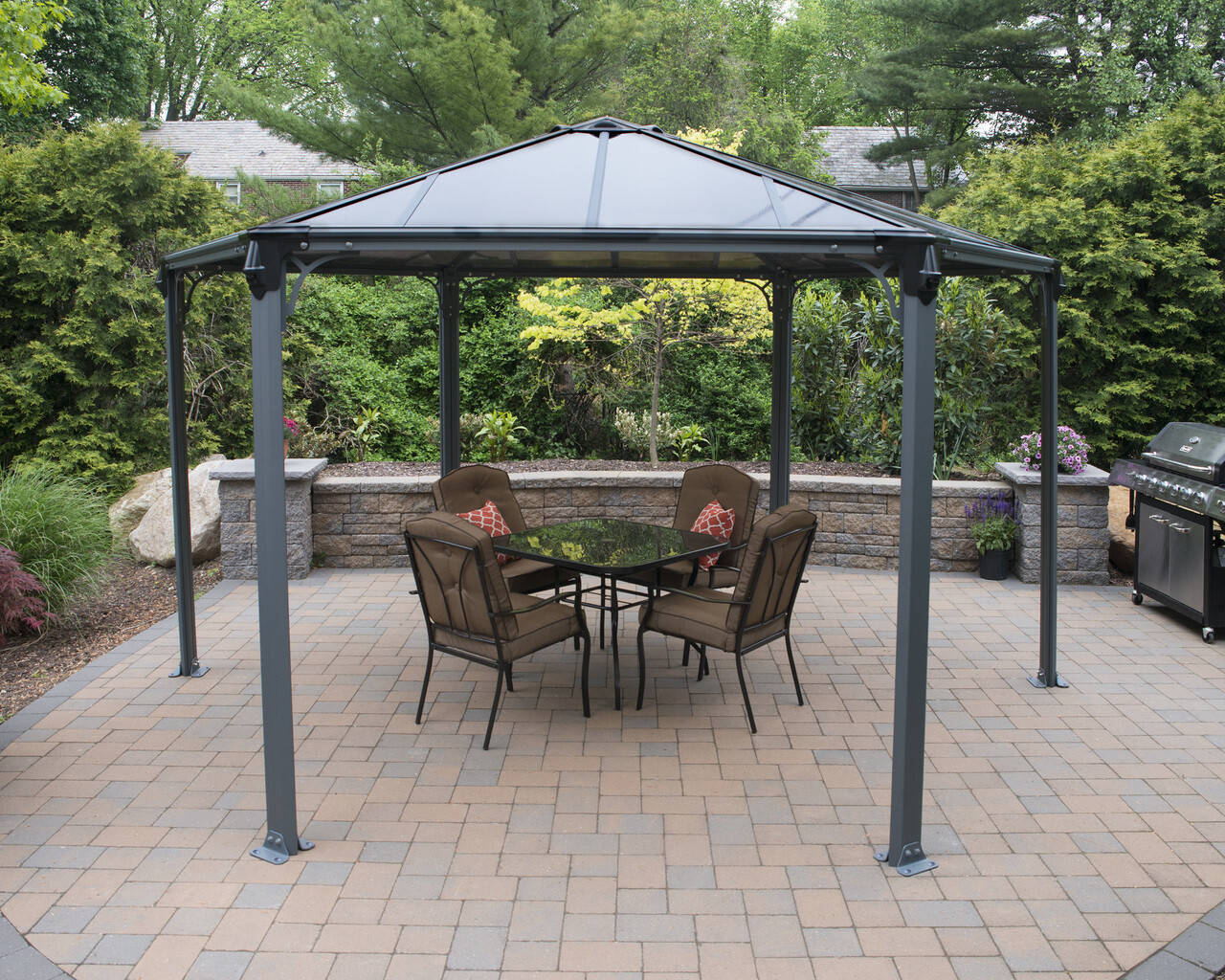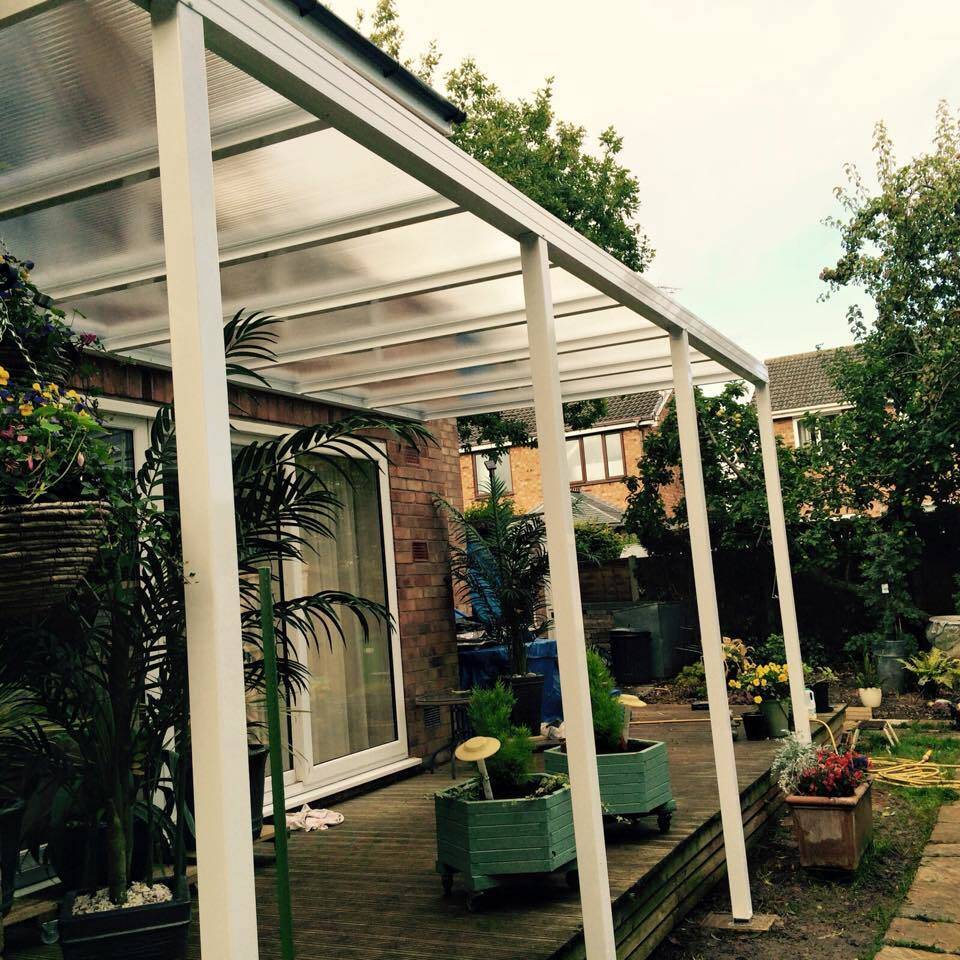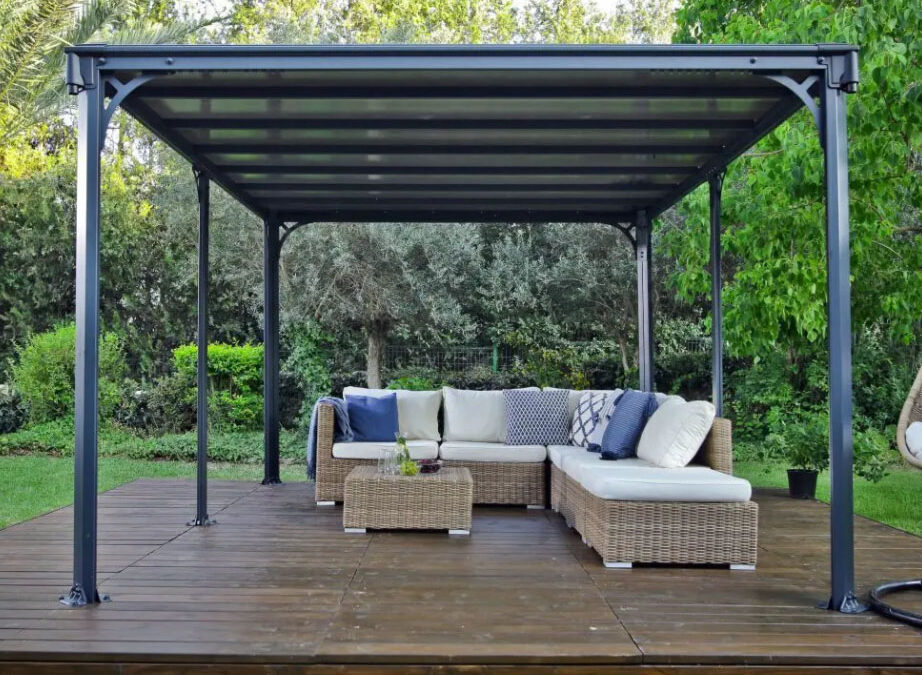The differences between attached and freestanding verandas are not as apparent as you would think and some people are completely unaware of the key stand-out components of each. Both the freestanding veranda and the attached veranda provide a social outdoor hub but there is much more to them as you will discover in our guide below.
What is a veranda?
A veranda is a roofed, open-air porch that’s normally attached to the outside of a residential building. A veranda or covered terrace provides both functionality and comfort in your garden. Whether it is a freestanding against the side of a house, a glass or an attached veranda with or without a veranda kit the protection verandas provide against falling leaves, sun and rain is certainly valuable.
As long as the doors of the house can open and close (if necessary) and the roof is a minimum of 2.2 metres in height then you can formulate the rest of your veranda as you wish.
The drainage components on top can be either transparent or translucent polycarbonate panels or even close metal roof panels if it suits you better. The walls can be partially enclosed or open all around depending on your requirements and your veranda can be made from aluminium or wood materials to suit your personal taste by Glazing Systems’ expert team.
If you choose to form a carport with your veranda the same height measurements are applicable with the other dimensions needing to be 5 metres long and 3 metres deep.
What is a freestanding veranda?

The inclusion nowadays of items such as Hebel panels is common but is not ideal for use with attached verandas. This is where the suitability switches to a more versatile design and in these circumstances a freestanding veranda comes into its own.
In direct contrast to an attached veranda, the adaptability of a freestanding veranda allows bespoke design in a variety of different sizes and unique shapes. Glazing systems can tailor a freestanding veranda to the specifications of your home allowing you the ability and freedom to place it wherever you want.
There are usually extra costs involved for extra posts and the required frame around the perimeter plus the likelihood of needing additional building permits or council consent is higher with a freestanding version than with an attached veranda.
What is an attached veranda?

Glazing systems customisation service provides quality and reliability on every veranda project providing outdoor social comfort and connection with advanced robust protection design. If your existing property has a steel frame, there is a possibility that it will need to be reinforced which will be an additional cost should you proceed.
Which option is right for you?
There is no right or wrong, the final decision ultimately comes down to what is right for you and your property needs. There are advantages and disadvantages of either option so the best way to decide is to break down your specific individual requirements and see which veranda specifications match best to your own.
If a freestanding glass veranda fits your personal preference for entertaining or hosting in spacious comfort then so be it. However, if you are budgeting in hope of reducing long-term bills with veranda temperature control to reduce your bills then perhaps an attached version of the veranda is more suitable.
How to build your own veranda
Whilst it is possible to build your own veranda with the right skill, knowledge, equipment and materials, we wouldn’t recommend it. If you don’t have the right veranda kit or are unsure about the process, it is advisable to leave it to the professionals for a secure, safe and lasting completion. However, if you would like to give it a try, here are some basic considerations you will need during the process;
- Making out the position
- Drainage
- Marking-out
- Fitting the wall beams
- Fixing the wall beam
- Using hammer fixings
- Post supports for fitting to paving tiles or stones
- Central post of the veranda
- Fitting the front beam to the posts
- Fitting the roof beams
- Metal profile sheets
- Translucent polycarbonate
- Securing the posts in the ground
- Applying for protection
- Fitting the posts
- Pouring concrete
Conclusion
A good quality veranda of any kind from Glazing Systems will add immense value to your home. Not only this but it will enrich your lives and connect your garden to your home fusing previously separate sections of your daily home life together as one. That in itself is priceless as will the memories you make on your new veranda.
Read the related article:


